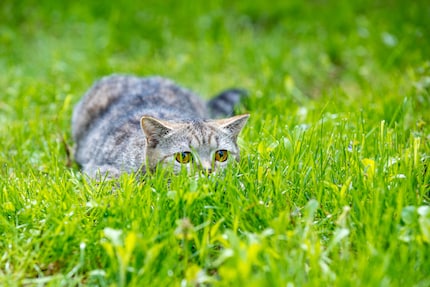
Background information
This is why cats smell so good
by Darina Schweizer

Cats are full of surprises – even their ears hide a little secret pocket. But what’s it for? Let’s find out.
«The smallest feline is a masterpiece.» Leonardo da Vinci’s words keep popping into my head as I marvel at my cats as if they were precious artworks. The other day, I noticed a detail I’d never seen before – the pockets on the sides of their ears.
«What are they for?» I ask myself, briefly considering whether they might be suitable for hiding snacks. Probably not. So I decided to find the actual answer.
I quickly discover this fold of skin has a name: Henry’s pocket. The term first appeared in a natural history book in 1971. According to one theory, it could have been named after Joseph Henry. The US physicist carried out research on electromagnetism and sound waves.

Joseph Henry’s topics of research are indeed related to this secret pocket on a cat’s ear. One of the most common theories (link in German) is that the fold of skin weakens lower tones when the ear is angled. For predators, this is helpful when hunting, as it allows them to hear high-frequency sounds from small prey more clearly. However, there’s no scientific evidence to support this theory.
Another possible but unproven theory is that the fold of skin allows the ear to move more freely. More specifically, Henry’s pocket could allow cats’ ears to bend and rotate better. This could be useful when hunting, as it means they can run in one direction and listen in another. This would allow cats to locate their prey more accurately.

What’s unlikely is that Henry’s pockets are useless and just a relic from ancestors. Why? Because lots of animals with skin folds on their ears have great hearing – weasels, bats, some primates, and dogs, for instance.
Whichever function Henry’s pockets may have, pet owners should keep a close eye on them. Parasites such as fleas, mites and ticks love to nest in these narrow hiding places. That’s why you should check them regularly and clean them gently (or have them cleaned). Turns out I’m doing the right thing when I marvel at my cats as if they were precious artworks.
What cat mystery do you find most fascinating? Let me know in the comments.
I love anything with four legs or roots - especially my shelter cats Jasper and Joy and my collection of succulents. My favourite things to do are stalking around with police dogs and cat coiffeurs on reportages or letting sensitive stories flourish in garden brockis and Japanese gardens.
Interesting facts about products, behind-the-scenes looks at manufacturers and deep-dives on interesting people.
Show all